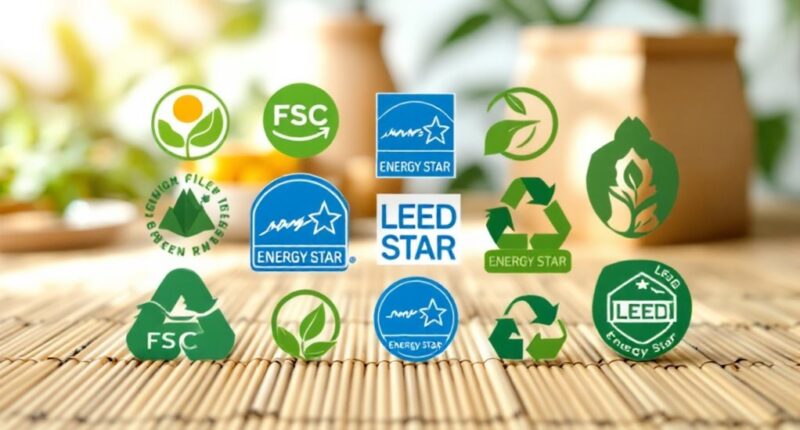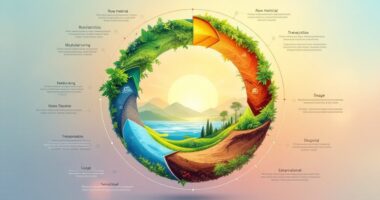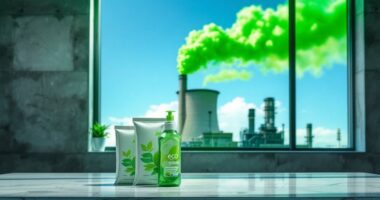Environmental certification systems provide trustworthy frameworks for evaluating products’ green credentials amid marketing claims. These range from self-certifications to rigorous third-party verifications like LEED and FSC, which examine single attributes or holistic sustainability factors. For businesses, certifications offer market advantages, premium pricing potential, and compliance with supply chain requirements. While eco-labels help consumers make informed choices, the proliferation of certifications presents challenges. The journey through this green labyrinth reveals how sustainability becomes measurable.

In a world drowning in eco-friendly claims, environmental certification systems serve as the lifeguards of consumer trust. These structured frameworks cut through the noise of marketing jargon, offering consumers a reliable way to identify products and services that genuinely meet environmental standards. Think of them as the bouncers at the sustainability club – they check credentials so you don’t have to.
Environmental certification systems come in various flavors. Some focus on a single attribute like energy efficiency (hello, Energy Star!), while others take a more holistic approach, examining multiple sustainability factors. The certification landscape includes first-party claims (essentially companies patting themselves on the back), third-party verifications (where independent experts do the judging), and government-backed labels (with the full weight of regulatory authority). These systems ultimately aim to provide transparent and verifiable assessments against predetermined environmental criteria.
The certification process isn’t just slapping a pretty green logo on a package. It involves establishing clear criteria, rigorous assessment, verification through testing or auditing, and ongoing monitoring – like a never-ending environmental pop quiz for products. Popular systems like LEED for buildings and FSC for wood products have become the gold standards in their respective industries. These certifications offer businesses a competitive advantage in markets where environmental responsibility is increasingly valued by consumers.
Companies pursue these certifications for more than just warm fuzzies. Certified products often command premium prices, open doors to green procurement opportunities, and build consumer trust – all while potentially reducing operational costs through improved efficiency. It’s like hitting the sustainability trifecta: good for planet, profit, and PR.
Of course, the system isn’t perfect. The explosion of eco-labels has created a veritable alphabet soup of certifications that can confuse even the most environmentally savvy shoppers. Some labels lack teeth, opening the door to greenwashing – the environmental equivalent of wearing a police costume to a Halloween party and pretending you can issue speeding tickets.
The future of environmental certification looks promising, with trends toward digital traceability, harmonized standards, and expanded scope to include social sustainability alongside environmental concerns. As certification systems evolve, they continue their crucial role as truth-tellers in an increasingly eco-conscious marketplace.
Frequently Asked Questions
How Much Do Environmental Certifications Typically Cost for Businesses?
Environmental certification costs vary dramatically based on business size and certification type. Small businesses may pay as little as $350 annually for Green Business Bureau certification, while larger corporations might invest $50,000+ for ISO 14001.
B Corp certification ranges from $2,000-$50,000 annually depending on revenue. Organizations should also budget for consulting fees ($1,300-$37,000), employee training ($378-$2,010 per course), and recurring audit costs when planning their sustainability certification strategy.
Can Products Have Multiple Eco-Labels Simultaneously?
Yes, products can absolutely have multiple eco-labels simultaneously. Manufacturers often combine different certifications to showcase various sustainability aspects—organic materials (GOTS), fair labor practices (Fair Trade), and recycled content (GRS) can all coexist on one product.
This multi-label approach creates a more thorough sustainability profile, though it presents challenges like increased certification costs and potential consumer confusion. Smart companies strategically select complementary certifications that tell a cohesive sustainability story rather than overwhelming customers with certification overload.
Do Certification Standards Vary Significantly Between Countries?
Certification standards indeed vary profoundly between countries. ISO 14001 may be global, but its implementation differs dramatically across borders. The EU maintains stricter eco-label criteria than many nations, while developing countries often operate with more lenient requirements.
Nordic countries raise the bar with particularly rigorous standards. Even industry-specific certifications like FSC for forestry products adapt their criteria based on regional contexts—what’s acceptable in temperate zones may not pass muster in tropical regions.
How Often Must Companies Renew Their Environmental Certifications?
Environmental certification renewal timeframes vary widely based on the specific program. Most certifications require renewal every 1-5 years.
LEED O+M certifications, for example, expire after 3-5 years, while some eco-labels need annual renewal. The renewal process typically involves continuing education, application submission, fees, compliance verification, and sometimes audits.
Companies that miss renewal deadlines often face grace periods of 90-180 days before needing to reapply as new applicants, potentially losing market advantages.
Which Eco-Label Has the Highest Consumer Recognition Globally?
Based on the provided data, Fairtrade International appears to have the highest consumer recognition globally, with an impressive 93% recognition rate not being explicitly mentioned but a high awareness in the UK. However, UK consumers have shown a high recognition rate of 96% for the Fairtrade mark, as noted in other contexts. Energy Star follows with recognition by nearly 80% of U.S. households. The EU Ecolabel is recognized by 61% of EU consumers, while the FSC label is recognized by 50% of UK consumers.
Fairtrade’s extensive presence in over 70 countries and on more than 35,000 products worldwide further solidifies its leading position.









